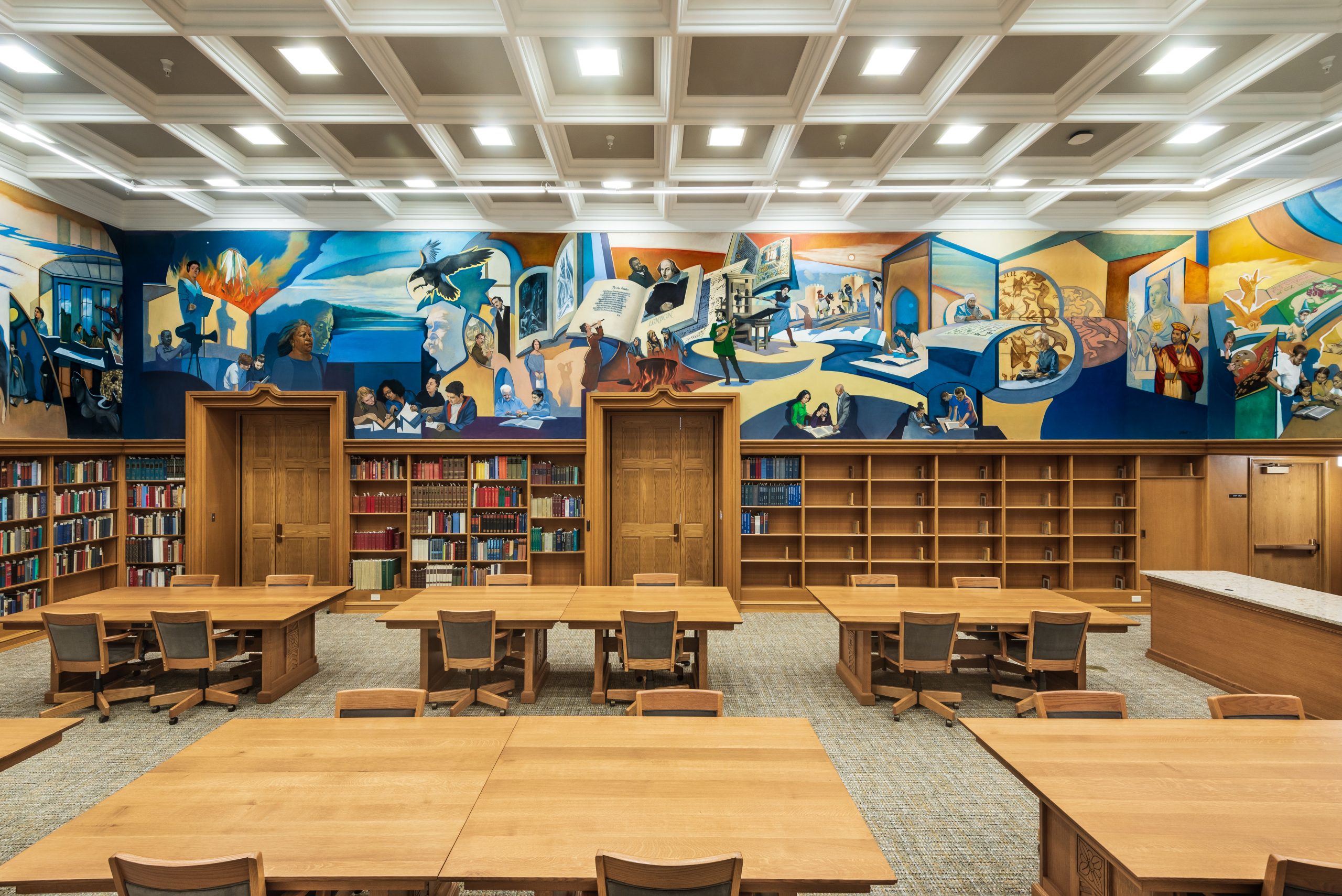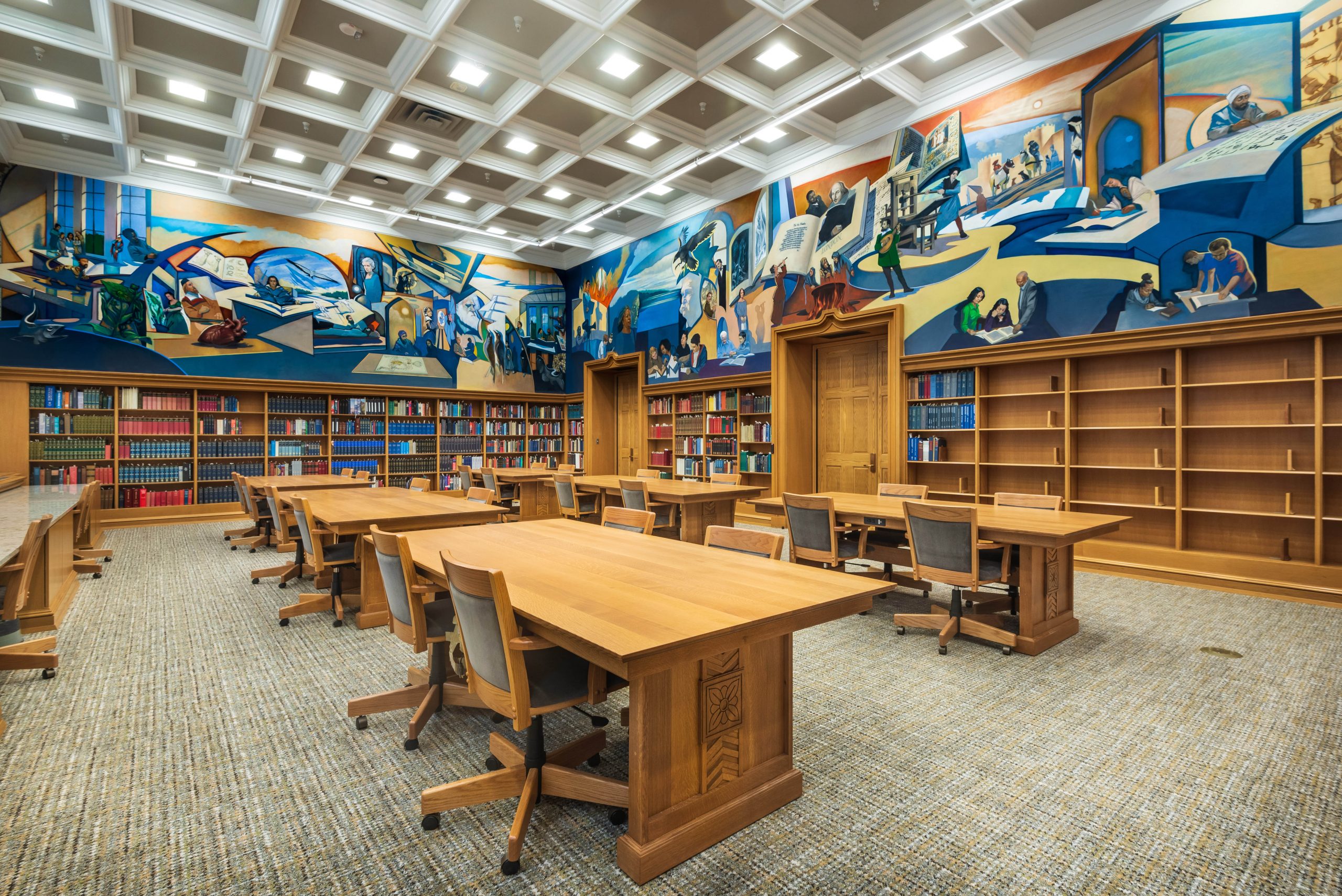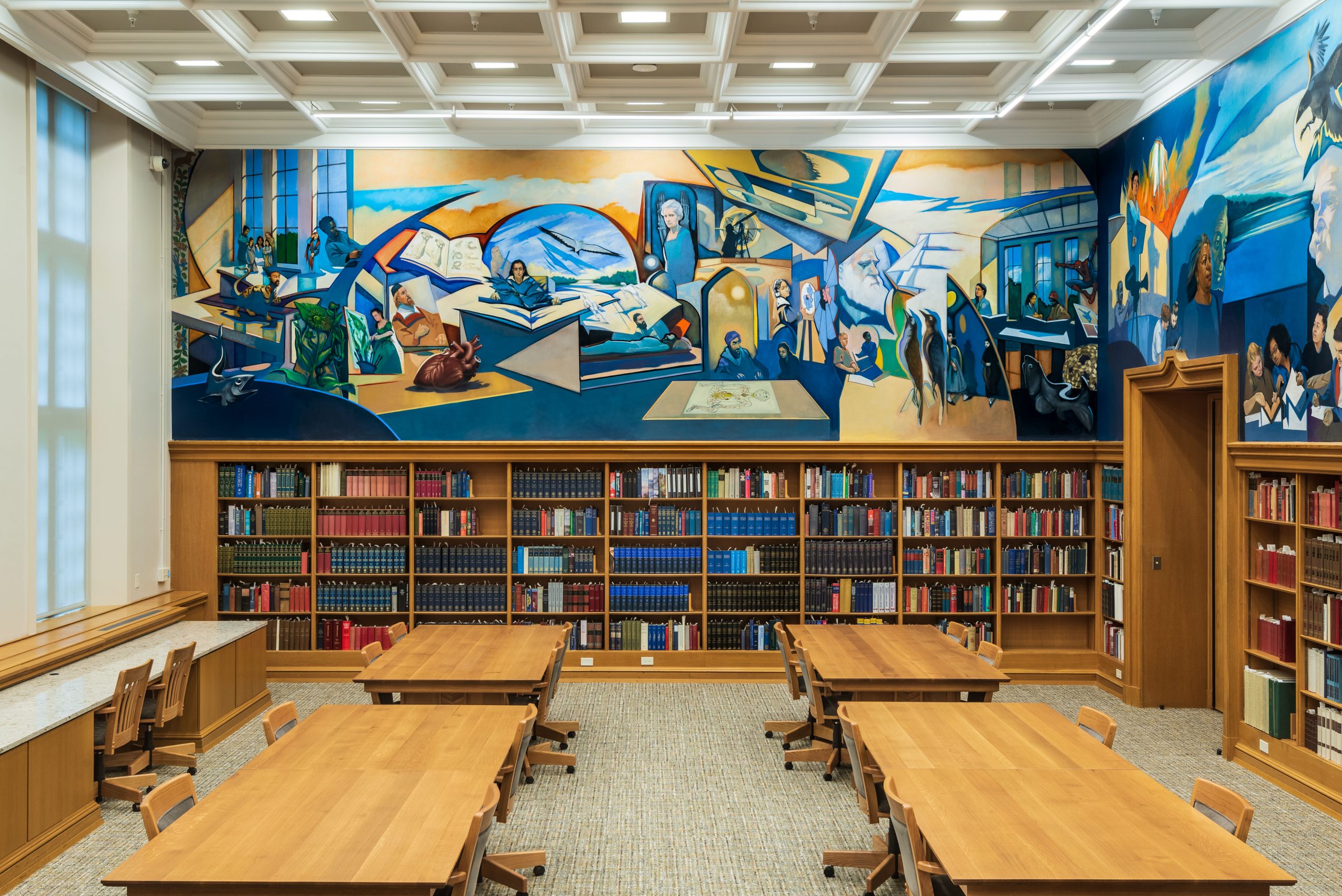





Client: Indiana University, Bloomington and the Lilly Endowment
Location: Bloomington, IN, United States
Completion date: 2021
Artwork budget: $400,000
Project Team
Artist
Ralph Gilbert
Ralph Gilbert Studio, LLC
University Architect
Shih-Ping Lin
Indiana University, Bloomington
Conservator and expert installer
Dr. Duane Chartier
The International Center for Art Intelligence Inc.
Historian/Consultant
Dr. Mary Odem, PhD
Emory University Emerita
Content Knowledge
Numerous University Faculty Members
Indiana University
Overview
The Lilly Library of Indiana University is one of the great special-collections libraries in the United States, housing millions of rare books and literary artifacts. As part of the renovation of the Library, the Lilly Endowment (Eli Lilly Pharmaceuticals) funded this mural project. These murals, almost 100 feet in length by 9 feet in height, reflect the library’s rich resources in world literature, history, the sciences, religion, and the arts. This commission was conducted as an international competition and the award was based entirely on prior work and in-depth interviews with the selection committee.
Goals
The Lilly Library holds rare books and manuscripts of great value, studied by scholars who are experts in their disciplines. The murals had to depict those holdings vividly and insightfully. So, while I worked with the University architect on technical matters, the most intense collaboration occurred with faculty members who guided my interpretations of and relationships between their disciplines. In preparation, I had a series of individual meetings with specialists in all disciplines to educate myself for the task. Since the holdings included seminal works in the humanities, literature, arts, religion, and sciences from the 12th century onward, the seamless integration and progression of imagery was crucial and complex. The challenge was to create a work that represented the touchstones of the holdings while not visually overwhelming those who use the library’s reading room. On a purely visual level, the design was influenced by the space and its primary contents of archival materials and the room’s furnishings—all were rectangular. I took that into consideration while organizing the imagery within broad arcs that played against the room’s vertical and horizontal axes. These works were completed over an intense one-year period.
Process
We built a 40-foot wall that bisected my studio diagonally that allowed for both sides to accommodate the unstretched, primed canvases. Two murals could be in process at once, with the third to follow. The paintings were done in oils and were preceded by over thirty drawings and painted studies. Despite extensive preparation, up until the very end of the process, new discoveries, additions, and revisions of both design and content were made. When the murals were thoroughly dry, they were rolled and shipped to the University. The installation was exacting and took place over 4 days, using the marouflage technique of adhereing the canvases to the walls.
Additional Information
These murals are directly next door to the University’s concert hall, that houses a major cycle of murals by Thomas Hart Benton, America’s most famous muralist. My challenge was to create works that would be of their own time, that reflected my sensibilities as an artist, but also hold their own in relation to the Benton murals.